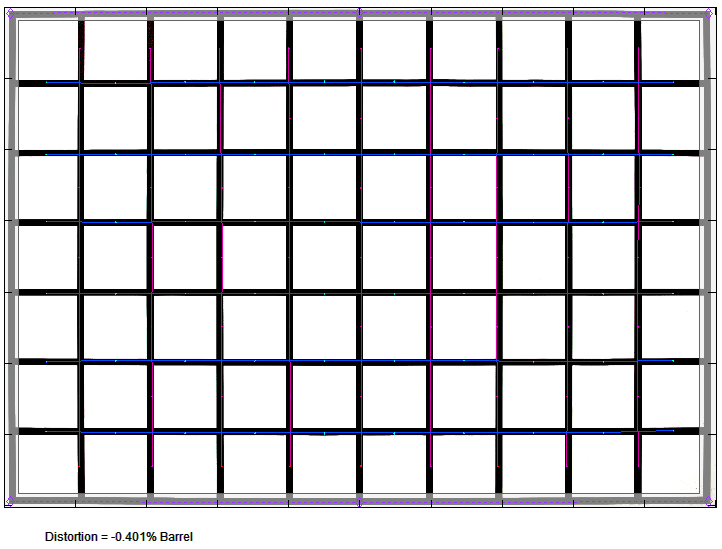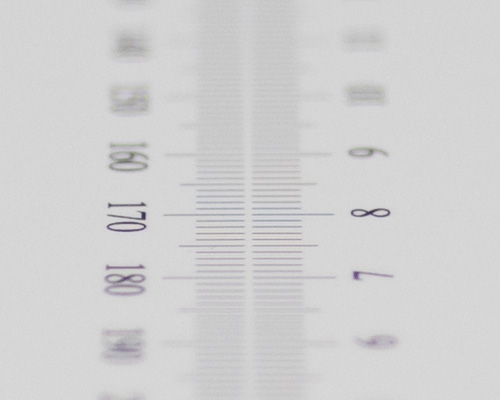|
Canon EF 35mm f/1.4 USM L II - Review / Test Report - Analysis |
|
Lens Reviews -
Canon EOS (Full Format)
|
|
Page 2 of 3

Distortion
Let's start with the simple things - distortions. No issues here really. A barrel distortion of just 0.4% is pretty much irrelevant in most situations.

Vignetting
Very fast lenses usually suffer from pronounced vignetting at large apertures, and the new Canon lens is no exception to this rule here. Wide open, there is a hefty amount of light fall-off (3EV) towards the corners. As usual, stopping down reduces the amount of vignetting considerably. At f/2.8, vignetting is down to moderate levels and from f/4 onward it should no longer be an issue for most subjects. Still the lens isn't that special here.

MTF (resolution)
The lens delivered somewhat mixed results in the lab. In the image center, the quality is nothing short of breathtaking even at f/1.4. At f/2-f/2.8, it may even be able to outperform the 50mp monster sensor used in the EOS 5Ds R (used for testing). The lens can't combat the laws of diffraction which are getting more pronounced from f/8 onward. The outer image region is a different story though. At f/1.4 and f/2 they are somewhat soft although you should keep in mind again that this is at 50mp. The resolution reaches good levels at f/2.8 and it's scratching at the very good mark at f/8. The level of contrast is very high from f/1.4 to f/11.
The field curvature is very low so the slight softness isn't emphasized any further at large apertures.
Please note that the MTF results are not directly comparable across the different systems!
Below is a simplified summary of the formal findings. The chart shows line widths per picture height (LW/PH) which can be taken as a measure for sharpness.
If you want to know more about the MTF50 figures you may check out the corresponding Imatest Explanations

Chromatic Aberrations (CAs)
Chromatic aberrations (color shadows at harsh contrast transitions) are very well controlled showing readings below an average pixel width of 0.5px at the image borders.

Bokeh
One of the primary usage scenarios for a large aperture lens is to separate the main subject from the background. In such an image the quality of the bokeh (out-of-focus blur) is of major significance. The Canon lens delivers a quite smooth bokeh for a wide angle prime but like most wide-angle lenses it is not perfect here. The foreground is quite buttery whereas the more critical image background is somewhat more harsh when it comes to contrast transitions.
 Out-of-focus highlights are nicely rendered in the center zone. They show a slight outlining effect at f/1.4 but this effect is gone when stopping down to f/2 already. The inner zone of the highlight disc is smooth with only marginal traces of sub-structures.
Out-of-focus highlights are nicely rendered in the center zone. They show a slight outlining effect at f/1.4 but this effect is gone when stopping down to f/2 already. The inner zone of the highlight disc is smooth with only marginal traces of sub-structures.
 However, even this mighty Canon lens isn't capable to delivering circular highlight discs at the image borders. Below is an example of "cat's eyes" taken at the bottom of the image (middle section). This is a vignetting effect that dissolves the more you stop down.
However, even this mighty Canon lens isn't capable to delivering circular highlight discs at the image borders. Below is an example of "cat's eyes" taken at the bottom of the image (middle section). This is a vignetting effect that dissolves the more you stop down.

Bokeh Fringing / Longitudinal Chromatic Aberrations (LoCA)
As mentioned in the introduction, Canon uses a "BR" element to reduce axial chromatic aberrations in the EF 35mm f/1.4 USM L II. Bokeh fringing effects are normally a largely unresolved issue - also because they are very difficult to remove during post processing. The good news is that this BR element does make a difference here. You can still spot some purple halos in the front of the focus point and green ones beyond but they are certainly reduced significantly.
In addition, these shots illustrate a focus shift towards the rear the more you stop down. Since the focus point doesn't really lose its focus, it's not really significant enough to show up in most images though.
|
Move the mouse cursor over the f-stop marks below to observe the respective LoCAs
|
| f/1.4 |
f/2 |
f/2.8 |
f/4 |
f/5.6 |
|

|
|